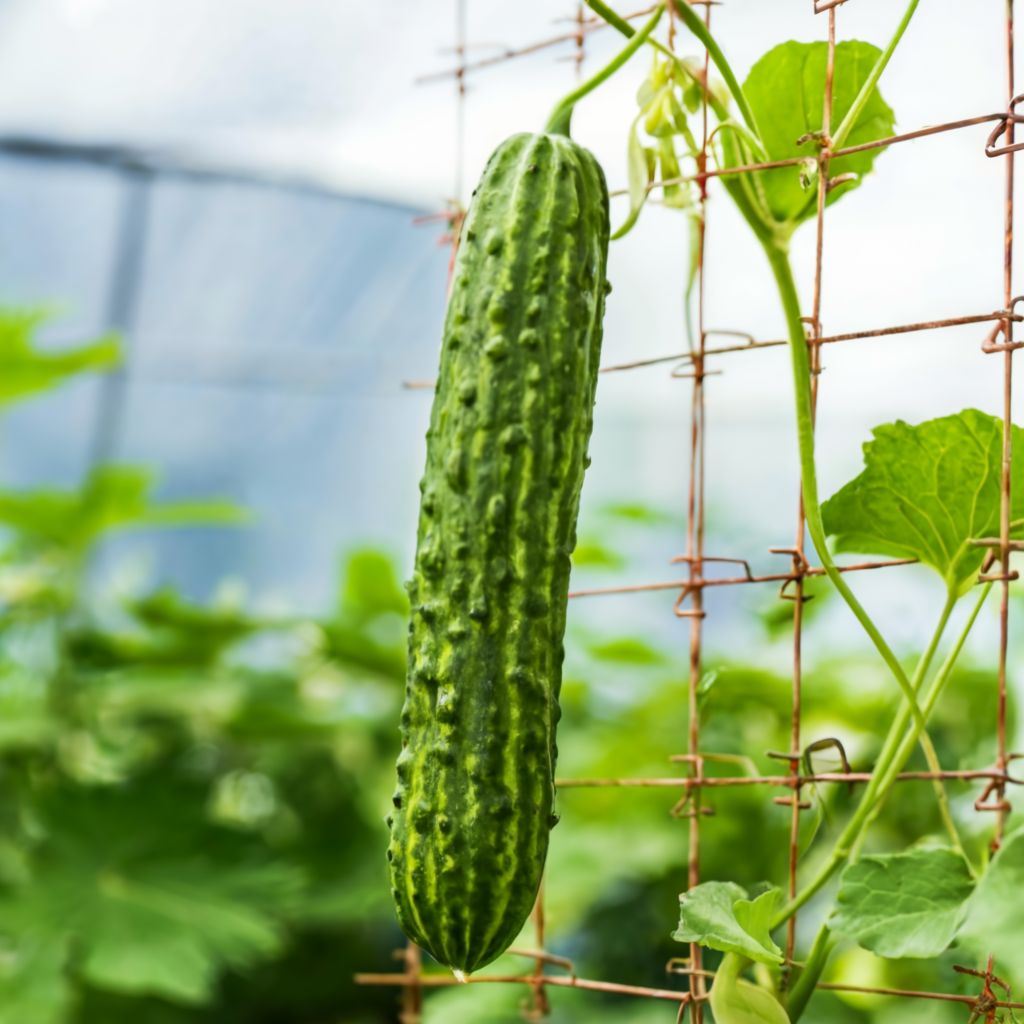
Growing cucumbers can be a rewarding experience for beginners, but it’s not without its challenges. To help you avoid common pitfalls and ensure a successful harvest, we’ve compiled a list of the top 7 mistakes that beginners often make when growing cucumbers, along with practical solutions to fix them. Whether you’re new to gardening or looking to improve your cucumber-growing skills, this guide will provide you with valuable insights to help you cultivate healthy and abundant cucumber plants.
7 Mistakes Beginners Make Growing Cucumbers

1. Sowing Seeds in Shivering Soil: A Recipe for Stunted Growth
Cucumbers, being heat-loving vines, are not fans of frosty starts. Planting seeds too early, when soil temperatures linger in the low 50s (°F), can stunt their growth or even lead to seed rot.
The Fix: Patience is key! Hold off sowing seeds directly outdoors until the soil warms to a consistent 70°F (around 21°C). If you’re eager to get a head start, consider starting seeds indoors 4-6 weeks before transplanting them outside, ensuring nighttime temperatures stay above 60°F (16°C).
Bonus Tip: Germinate your seeds in a sunny location, using a heat mat to maintain optimal soil temperature.
2. Choosing a Shady Spot: Starving Your Cucumbers of Sunshine
Cucumbers crave sunshine, at least 6-8 hours a day. Relegating them to a shady corner of your garden is a surefire way to end up with weak, spindly vines and pale, underdeveloped fruits.
The Fix: Select a location that receives ample sunlight throughout the day. If your garden layout is less than ideal, consider companion planting with taller crops like corn or beans in a north-south orientation. This way, the taller plants provide some afternoon shade without completely blocking out the morning sun.
Note: Don’t confuse dappled sunlight with full shade. While a bit of afternoon shade can be beneficial in very hot climates, cucumbers won’t thrive in constantly shaded areas.
3. Planting Too Close Together: A Cucurbit Crowding Catastrophe
Those adorable little cucumber seedlings might seem like they have plenty of space in the beginning. However, underestimate their vining potential at your peril! Planting seeds or transplants too close together creates a tangled mess of competing plants. This reduces airflow, hinders pollination, and ultimately leads to a diminished harvest.
The Fix: Plan your garden with ample space between cucumber plants. Refer to seed packet recommendations for specific spacing requirements, which typically range from 12-24 inches (30-60 cm) depending on variety.
For Vertical Victories: If garden space is limited, consider utilizing a trellis or fence to train your cucumber vines upwards. This not only saves ground space but also improves air circulation and fruit quality.
4. Neglecting the Nourishment: Starving Your Cucumbers for Success
Cucumbers are heavy feeders, requiring consistent nourishment to produce a bountiful harvest. Simply sticking them in the ground and hoping for the best is unlikely to yield impressive results.
The Fix: Amend your soil with plenty of organic matter like compost or aged manure before planting. Throughout the growing season, fertilize your cucumbers every 2-3 weeks with a balanced fertilizer formulated for vegetables.
Watch the Warning Signs: Yellowing leaves can be a sign of nutrient deficiency. If this occurs, consider a light application of a nitrogen-rich fertilizer to give your plants a boost.
5. Inconsistent Irrigation: From Feast to Famine (and Bitter Fruits!)
Cucumbers are thirsty creatures, requiring consistent moisture for optimal growth and fruit development. However, drowning them in a swamp isn’t the answer either. Erratic watering schedules can lead to a multitude of problems, including stunted growth, blossom end rot (a calcium deficiency causing sunken, discolored fruit bottoms), and bitter-tasting cucumbers.
The Fix: Aim for consistent, deep watering at the base of the plant, allowing the top inch of soil to dry slightly between waterings. This encourages deep root growth and prevents waterlogging.
Mulch Matters: Apply a layer of organic mulch around your cucumber plants to retain moisture, suppress weeds, and regulate soil temperature.
6. Ignoring the Invader: A Feast for Foes, Not You!
A healthy cucumber plant is a tempting target for a variety of pests and diseases. From squash bugs to powdery mildew, these unwelcome guests can wreak havoc on your harvest.
The Fix: The best defense is a good offense! Practice preventative measures like crop rotation to disrupt pest life cycles and encourage healthy soil microbes. Regularly inspect your plants for signs of trouble, and address them promptly with organic methods whenever possible.
7. Picking Prematurely: Patience is the Pickle to Perfection
Those little baby cucumbers might be tempting, but don’t be fooled by their cuteness! Picking cucumbers too early results in a smaller harvest and deprives the fruit of its full potential for sweetness and flavor.
The Fix: Patience is key! Allow your cucumbers to reach their full size and color according to the variety you planted. Most slicing cucumbers will be ready to harvest when they reach 6-8 inches (15-20 cm) in length, while pickling cucumbers can be picked as early as 2-3 inches (5-8 cm) long.
Bonus Tip: Regularly harvest your cucumbers to encourage the plant to produce more fruit throughout the growing season. A good rule of thumb is to pick every 1-2 days when the fruits are at their peak.
